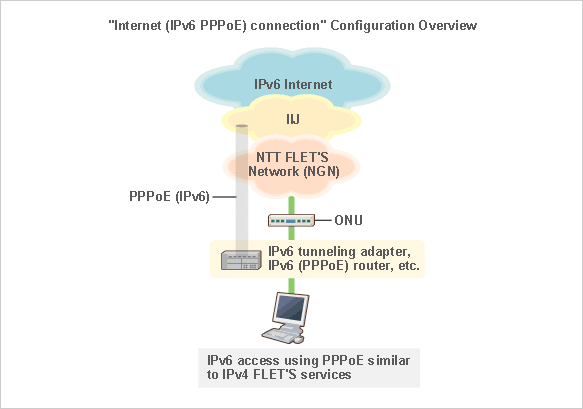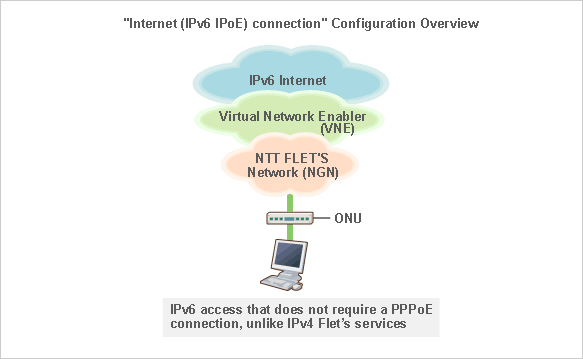Top of Page
- Links to move inside this page.
- HOME
- Technology
- IIJ Technology (archives)
- About FLETS IPv6 Access
About FLETS IPv6 Access
About FLET'S IPv6 Access
IPv6 PPPoE Connection

"Internet (IPv6 PPPoE) connection" uses the same PPPoE connection method as current IPv4 FLET'S services. End users configure a router or similar device using a PPP account and password. Both IPv4 and IPv6 PPPoE settings are required to set up an IPv4/IPv6 dual stack environment.
This network has a "multi-prefix" environment in which the IPv6 prefix of NGN and the ISP are assigned the same interface. This environment has some communication problems. Therefore, end users have to use an "IPv6 tunneling adapter" or configure settings to reject the IPv6 prefix of the NGN to solve these problems.
IPv6 IPoE connection

An "Internet (IPv6 IPoE) connection" is also called a "native connection," because unlike IPv4 FLET'S services a PPPoE connection is not required. Once an end user subscribes to an ISP and NTT construction work is completed, access to the IPv6 Internet is made possible through allocation of the "IPv6 prefix of VNE" via DHCPv6 or RA. Unlike an "Internet (IPv6 PPPoE) connection," the end user does not need to configure PPP account or other settings, and an IPv6 tunneling adapter is not required.
If FLET'S HIKARI NEXT is already being used, the IPv6 prefix of NGN currently allocated is automatically converted to the IPv6 prefix of VNE. Additionally, the multi-prefix problem does not occur, because a single IPv6 prefix is allocated.
- Related Contents
End of the page.